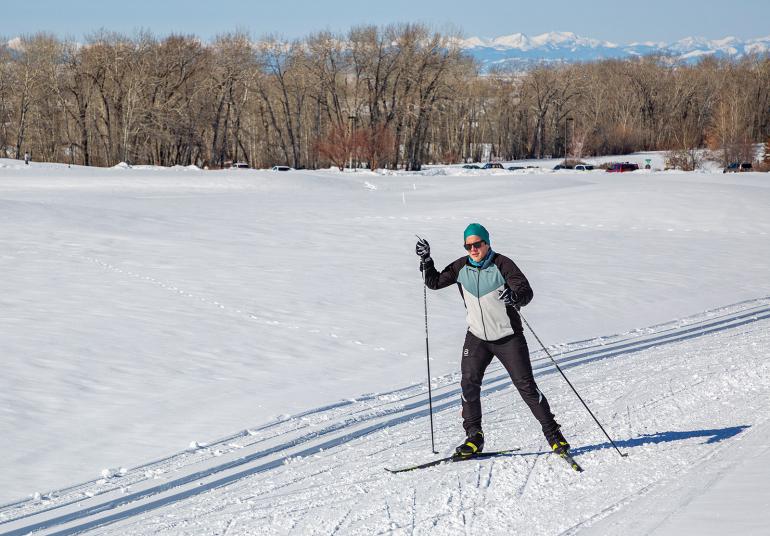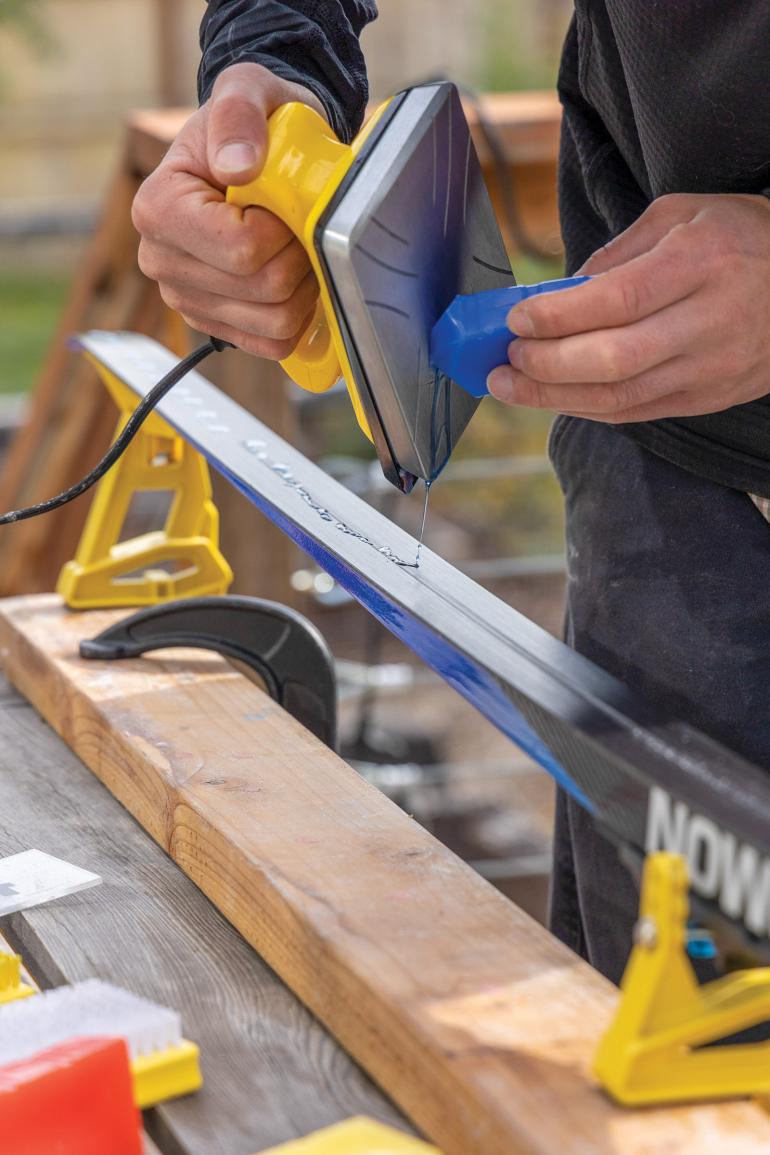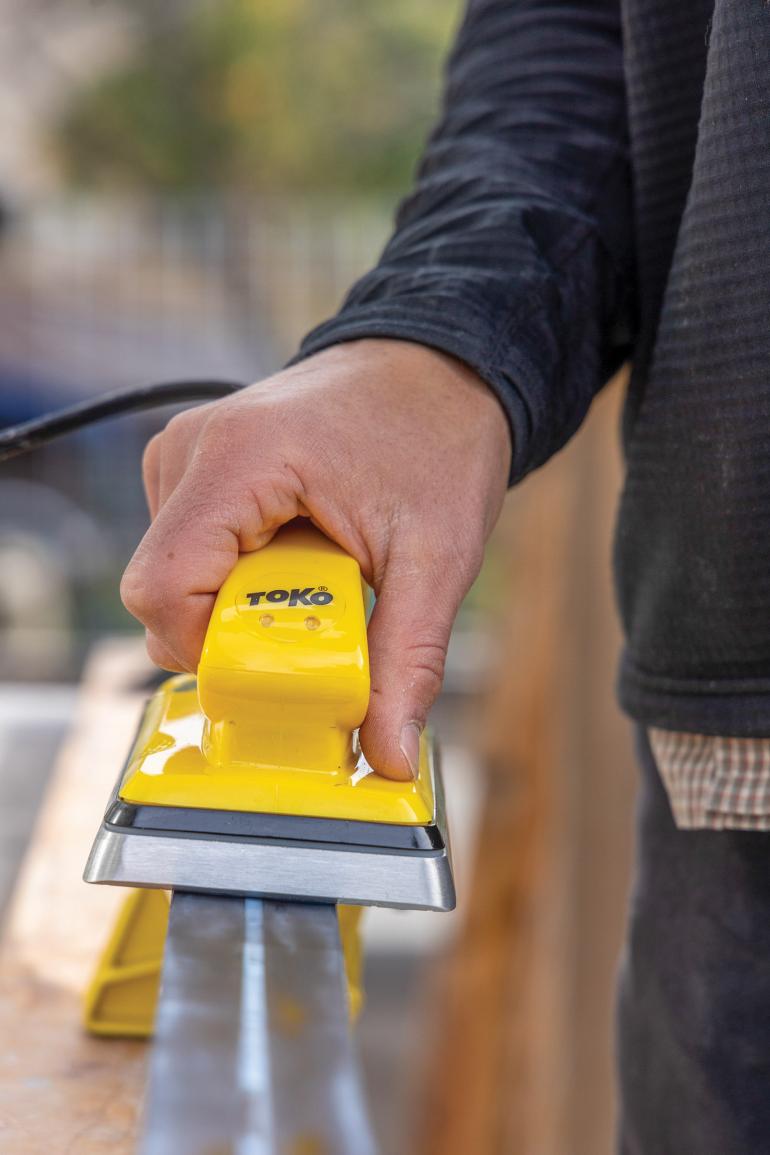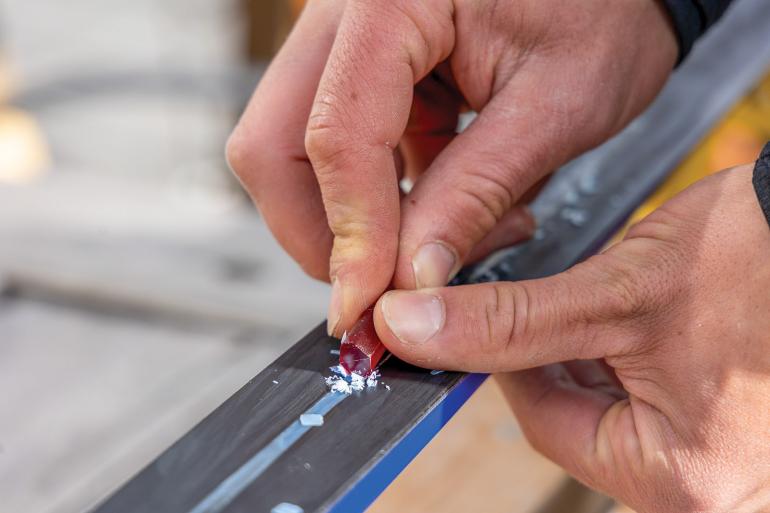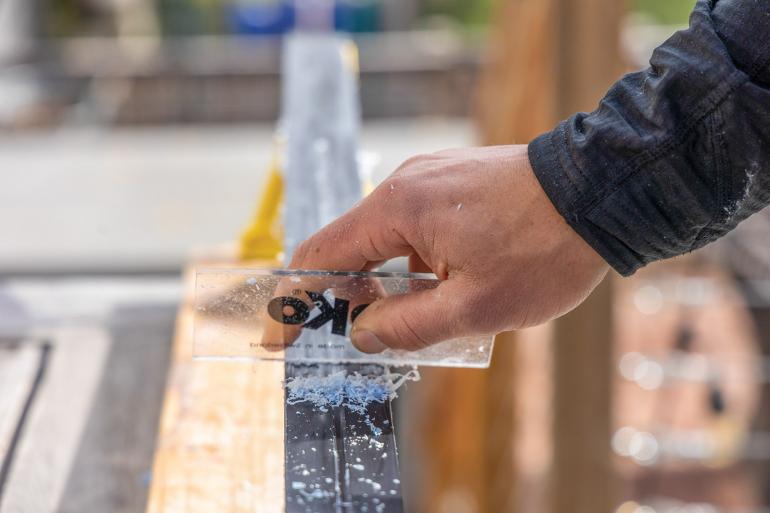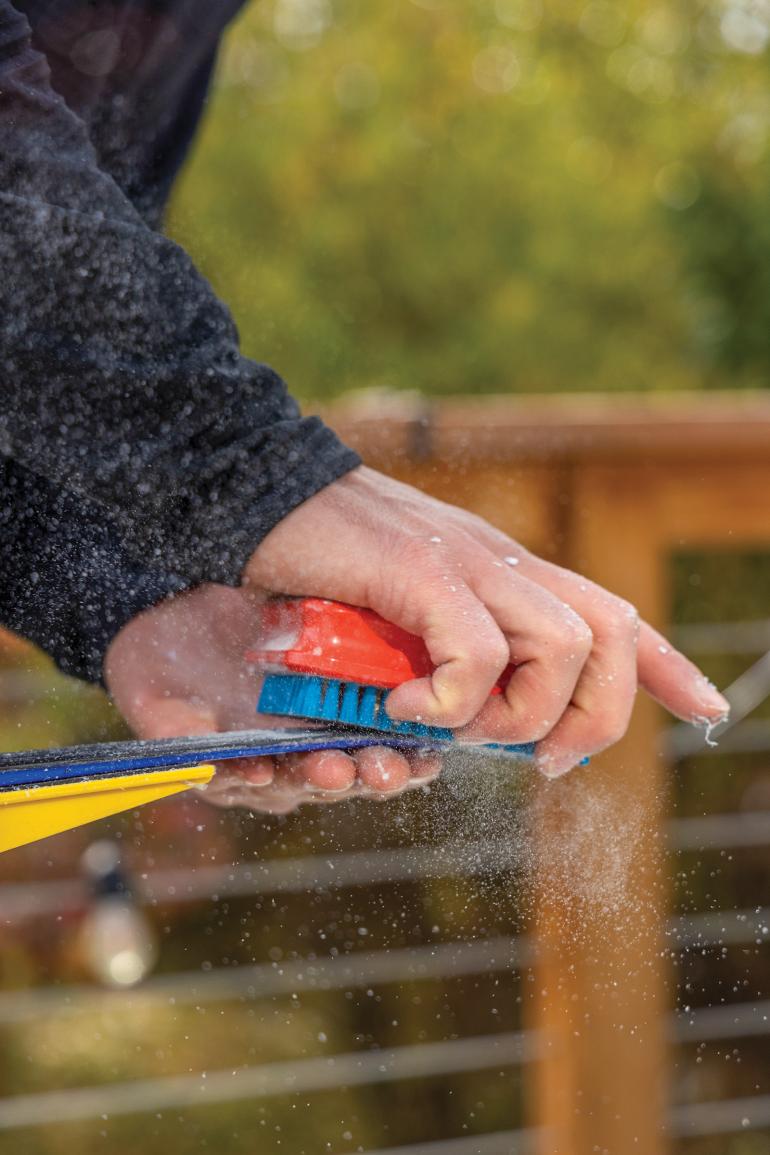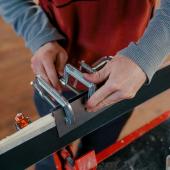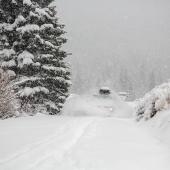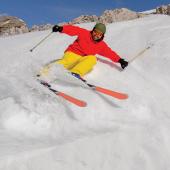Wax On, Wax Off
A guide to tuning skate skis.
Nordic skiers are wax nerds—ski wax, that is, although some are equally passionate with other uses. Regardless, a proper coating of wax is essential for a good day of skate skiing. The application and scraping techniques are similar to those used on alpine skis, but there are some important nuances. Nordic skis are more delicate, so they take a little more finesse to wax. Here’s the rundown, shown with a pair of Salomon S/Race skis—although the same technique applies to any skate ski.
Necessary Equipment
Nordic ski clamps
Nordic glide wax
Copper & nylon brushes
Heating iron
Edge & groove tool
Scraping tool
Instructions
1. Lock the ski in a clamp—Toko makes a good one, but you could easily make a DIY setup at home. Use the melting iron to dribble a bead of wax down the length of the ski. If you’re using the same iron you use for alpine skis, knock off any sharp burrs with sandpaper, lest they damage your more fragile Nordic bases. Make sure the wax has the right temperature rating for the conditions.
2. Running the hot iron with medium speed from tip to tail, melt the wax into the ski. The heat helps the wax impregnate into the ski base (skate skis actually absorb some of the wax, unlike alpine skis, whose extruded bases do not). Take a couple of passes, not lingering in any one spot. If the backside of the ski is too hot to touch at the tip or tail, pause to let things cool down. Pull the ski off the clamp and do the other ski. Allow them both to cool completely before proceeding.
3. Going from tip to tail (starting to see the pattern?), clean the groove and then scrape the edges with the edge & groove tool. Be gentle—it’s hard to damage metal edges on alpine skis, but you can easily nick or dent the plastic edges of Nordic skis.
4. Using the scraping tool, pulling at the angle shown, remove excess wax with one or two passes. Unlike downhill skis, which you can really ream on, don’t apply much pressure or you’ll peel off the base material, which has a very fine external structure, visible only in the right light. If the wax is coming off with a black color, you’re pressing too hard.
5. From tip to tail, take a few smooth, firm passes with the copper brush to clean things up. Do the same with the nylon brush. Don’t be afraid to apply lots of pressure with the nylon—it won’t damage your bases. The end result is a pair of nicely-waxed skate skis, ready to hit the groomed trails.


